Part 2. Think Tactics acoording to Vectors
2.10. How to Handle Fore Front Service
The spin kind served from the opponent to your forefront is about four: Curve⋅Cut, Shoot⋅Cut, Cut, and Knuckle.
Here, we explain your Drive return against opponent's Sidespin and Cut served to your front fore, and your dealing to the Knuckle.
Sidespin and Cut of long pitch have already explained. The service receivings at your fore front are also required to use the same spin composition.
In service receiving, you need to look at your opponent's swing and change the way you play immediately to match it.
Furthemore, it is important that you needs to take a short swing with racket's head standing because the ball's speed of the fore front service is slow.
If you swing the racket head frontward laying, the contact time is longer, the ball will be given too much force and jump out from the table.
2.10.1. How to handle fore-front side-bottom spin
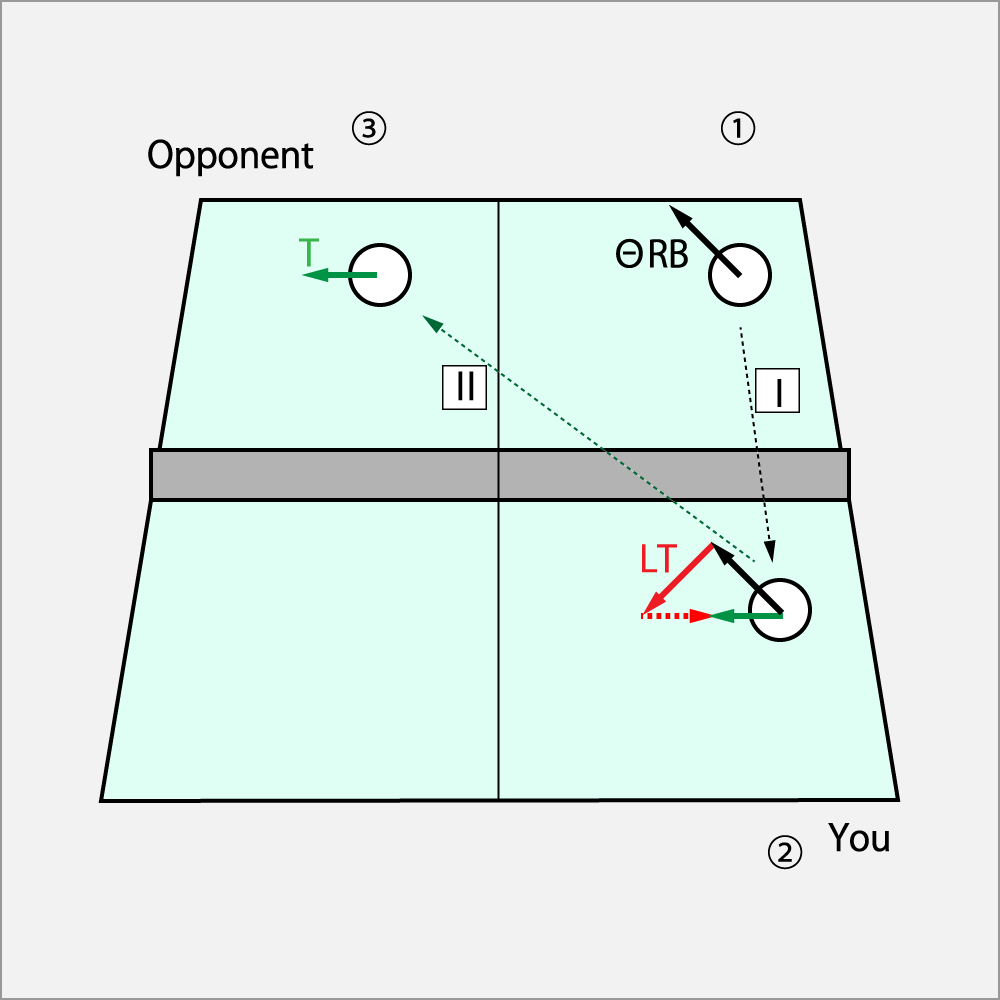
The left figure shows the case where the Curve⋅Cut service is returned with the Drive by Curve⋅Drive. This is the Cut service which is fed out from The opponent center side swing.
① The opponent has served the ball with ΘCurve⋅Cut (ΘRB) to your fore front side.
② You add Shoot⋅Drive (LT) to the spin on the line Ⅰ enterd your court.
③ The ball will be returned as Drive (T) on the Ⅱ to the opponent's court.
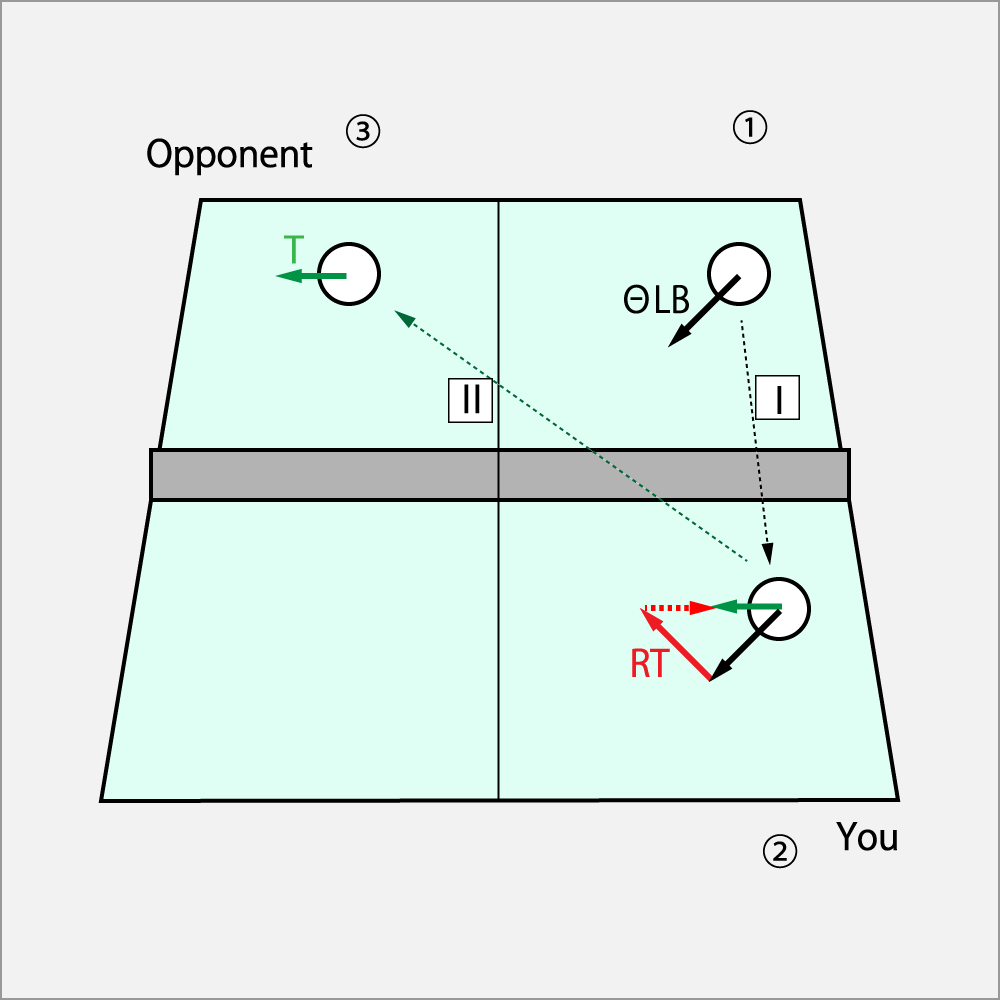
The left figure shows the case where the Shoot⋅Cut service is returned with the Drive by Shood⋅Drive. This is the Cut service which is fed out from the opponent table left side swing.
① The opponent had served the ball with ΘShoot⋅Cut(ΘLB) to the fore front.
② You add Curve⋅Drive (RT) to the spin on the Ⅰ entered your court.
③ The ball will be returned as Drive (T) on the Ⅱ to the opponent's court.
2.10.2. How to handle fore front Cut(1)
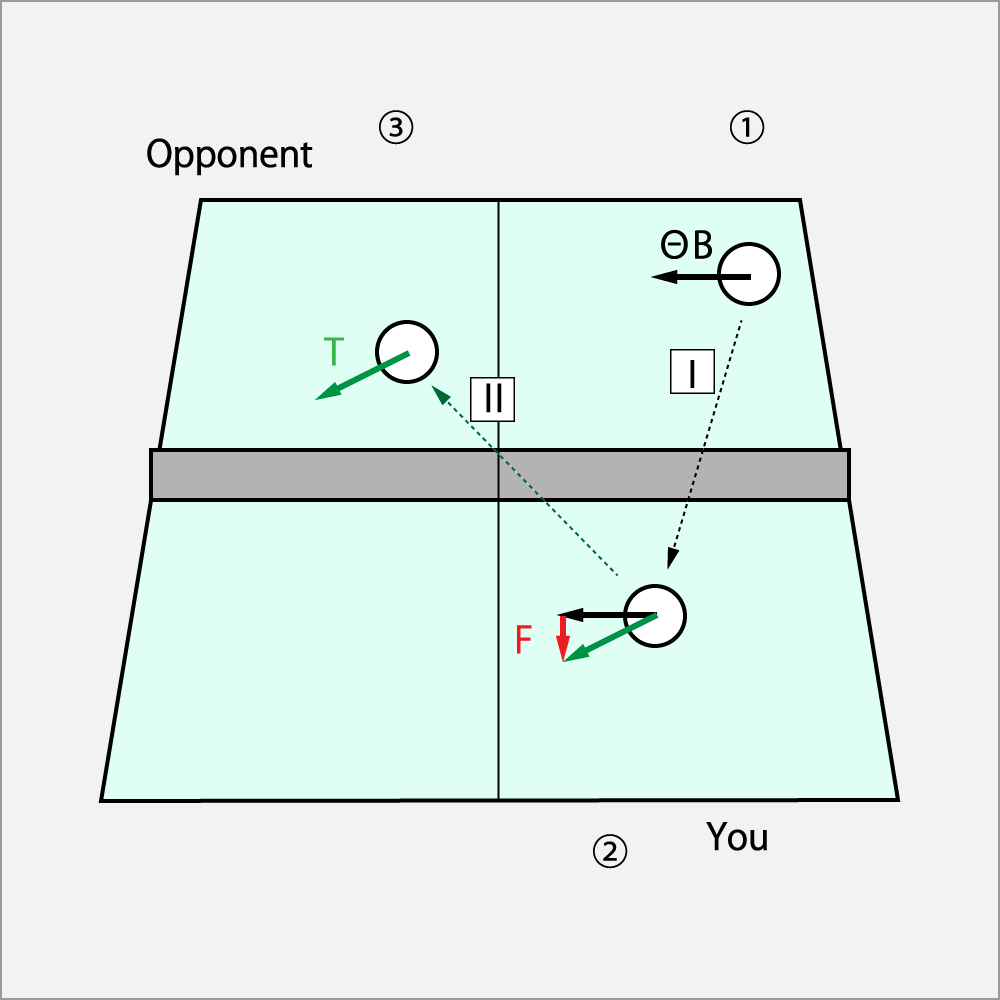
The left figure shows the case where the Cut service is returned with the Drive by Fcork.
① The opponent has served the ball with ΘCut (ΘB) to your fore front.
② You add Fcork (F) to the spin on the line Ⅰ entered your court.
③ The ball will be returned as Drive (T) on the Ⅱ to the opponent's court.
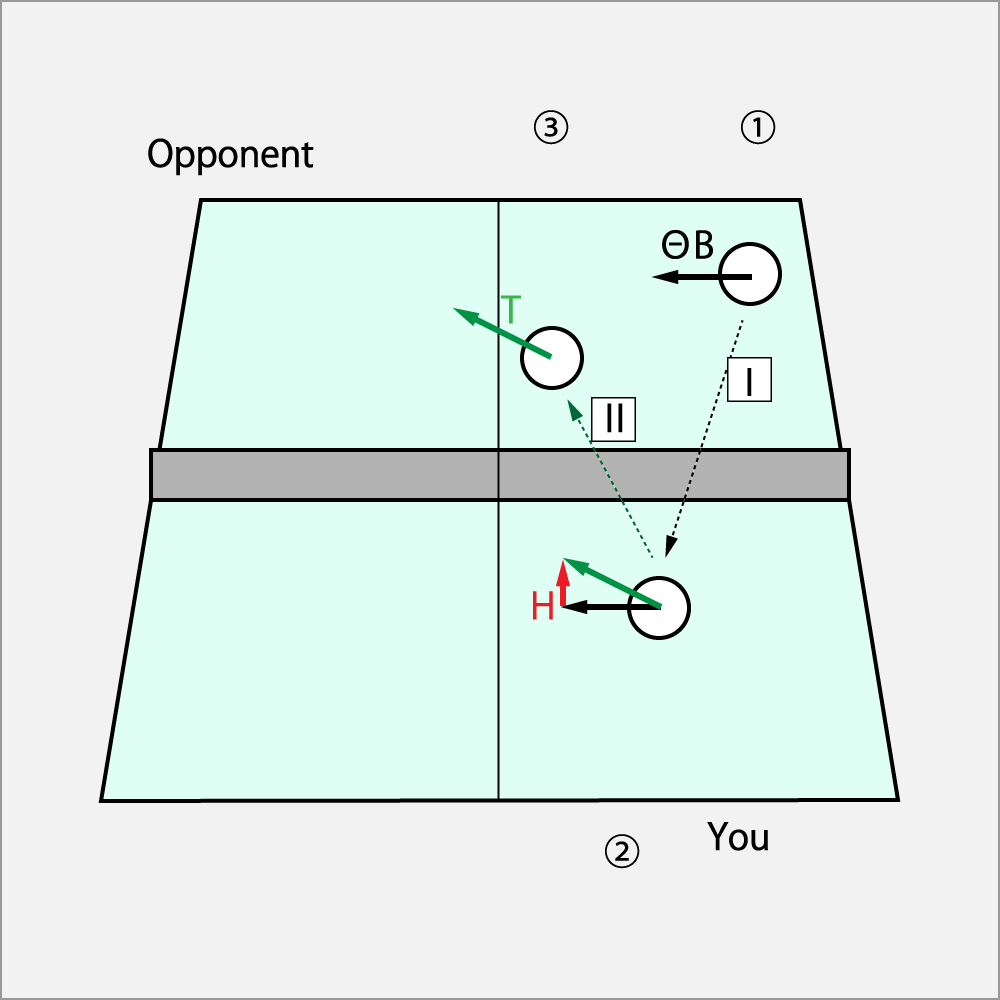
The left figure shows case where the Cut service is returned with the Drive by Hcork.
① The opponent has served the ball with ΘCut (ΘB) on your fore-front.
② You add Hcork (H) to the spin on the line Ⅰ entered your court.
③ The ball will be returned as Drive (T) on the Ⅱ to the opponent's court.
2.10.3. How to handle fore front Cut (2)
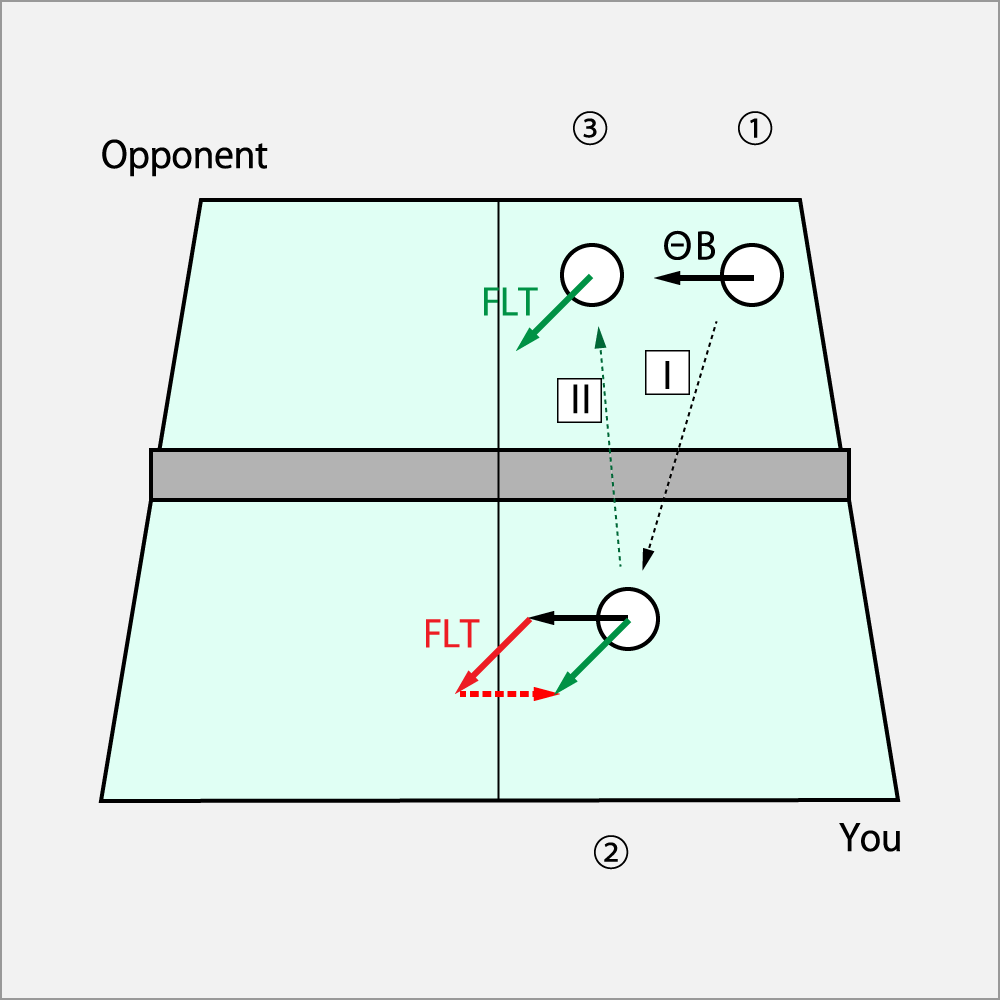
The left figure is the case where the Cut service is returned with the Drive by Cclock⋅Drive.
① The opponent has served the ball with ΘCut (ΘB) on your fore front.
② You add Fcork⋅Shoot⋅Drive (FLT) to the spin on theⅠ entered your court.
③ The ball will be returned as Fcork⋅Shoot⋅Drive (FLT) on the Ⅱ to the opponent's court.
When you felt the attack capability of Cork on Fig-2.12.2a weak, changing the additional spin to the Cork⋅Drive or Cork⋅Curve, it will be more aggressive.
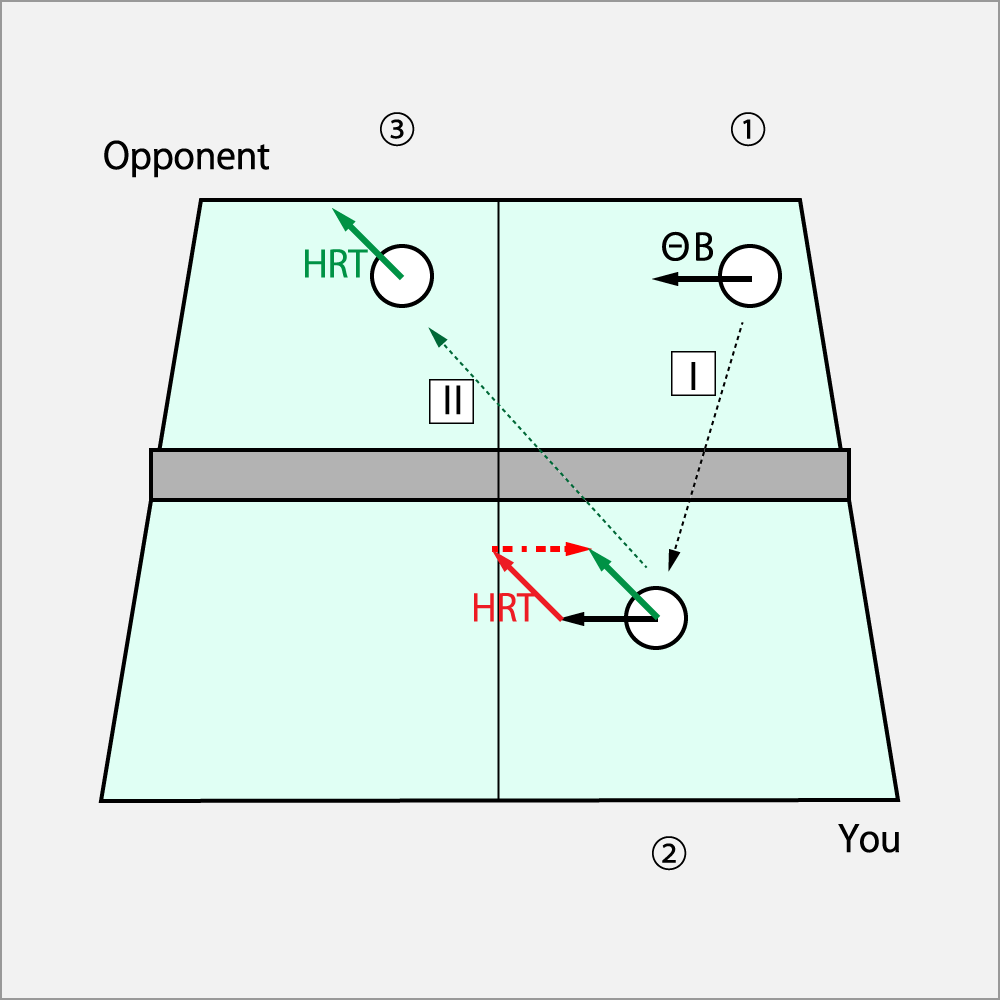
The left figure is the case where the Cut is returned with the Drive by Curve⋅Drive. This swing is so-called Chiquita.
① The opponent has served the ball with ΘCut (ΘB) to your front fore side.
② You add Hcork⋅Curve⋅Drive (HRT) to the spin on the line Ⅰ entered your court.
③ The ball will be returned as Hcork⋅Curve⋅Drive (HRT) on the Ⅱ to the opponent's court.
2.10.4. How to handle Knuckle
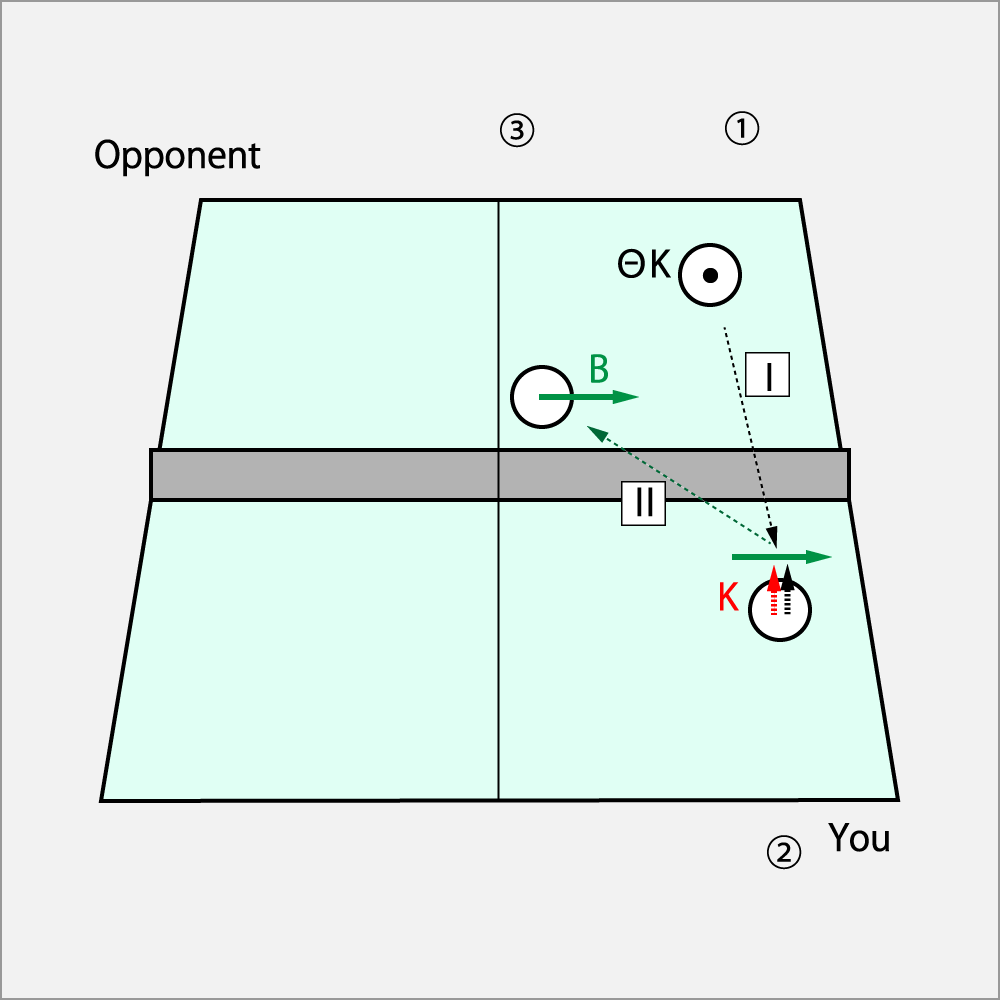
The left figure shows case where the Knuckle service is returned with the Cut at your fore-front.
① The opponent has served the ball with ΘKnucle(ΘK).
② You push the ball with Knucle lightly on the line Ⅰ in your coart, immedidately after the bounce, with the racket facing up 45°.
③ The ball will be returned as Cut (B) on the Ⅱ to the opponent's court near the net.
In this figure, the description of the way to receive at the ② is irregular. Since there is no expression in the vector diagram, such as immediately after the bounce or push the ball with knuckle, it is written by force. For the theory, refer to section 1.11.8 “Hitting The Ball Perpendiculary with The Racket without Giving Rotation”.
The important thing in this method is that the racket hits the ball right after the bouncing in that the ball's bouncing force is turned into rotation.
The timing of hitting the ball and racket is To-Ton, not Toon-Ton or Ton-Ton.
In addition, since the ball uses the force of bouncing, it can be behind or beside the ball, so that the returning direction can be freely changed. However, the racket surface needs to be turned up by 45°.